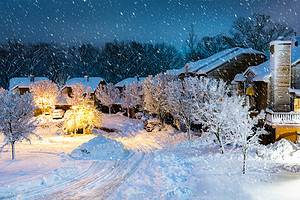Hurricanes are destructive storms that form over warm ocean waters. They produce high winds, heavy rainfall, and flooding. The wind speed of a hurricane determines its category on the Saffir-Simpson Hurricane Scale.
Though they form over water, hurricanes can reach land. When a hurricane makes landfall, all the water collected over the oceans comes ashore, which is known as storm surge. Anyone living or visiting a hurricane-prone area should be aware of hurricane season, the time of year when hurricanes happen the most often.
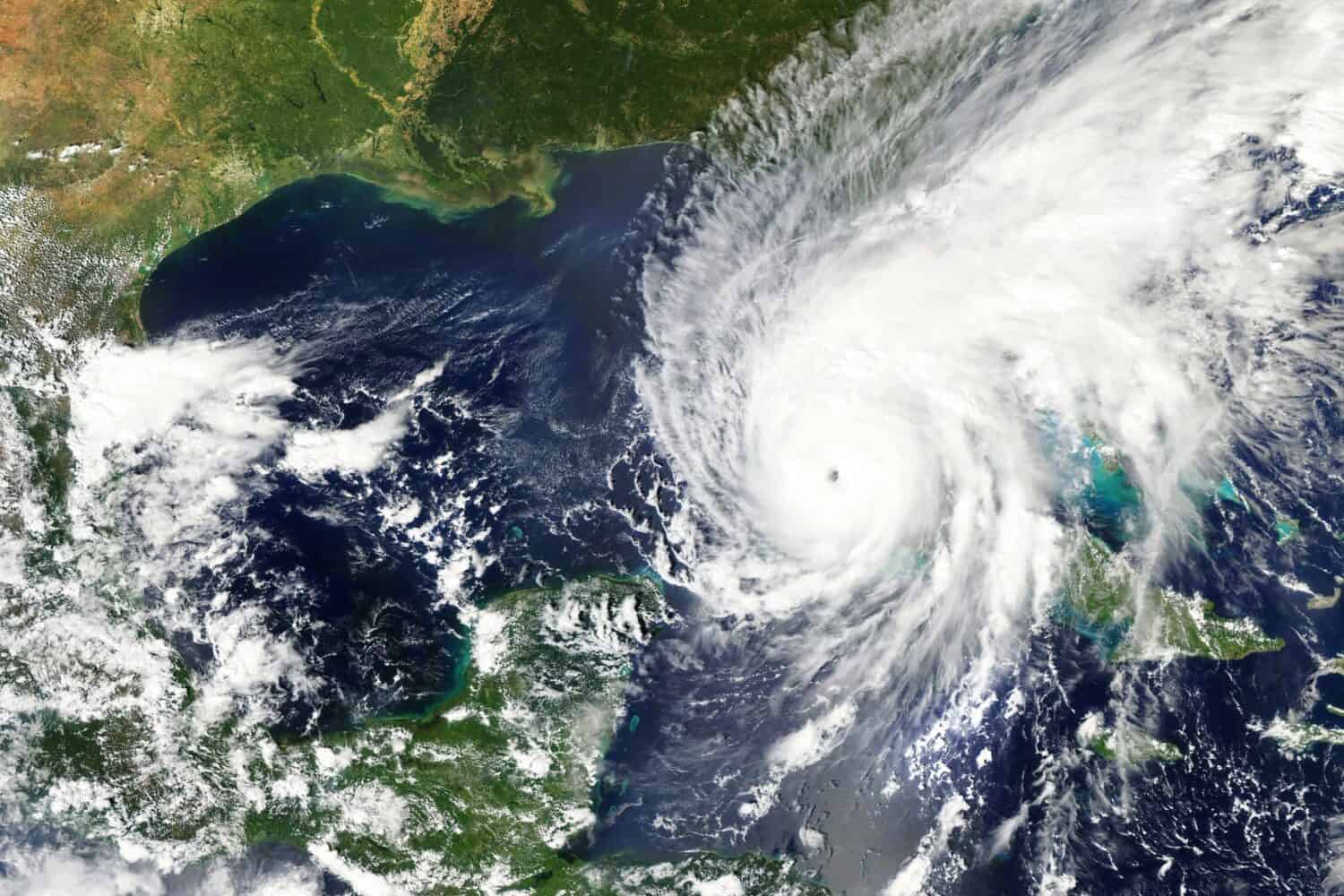
Hurricanes start out as tropical disturbances. Rain clouds build over an area of warm ocean waters.
©lavizzara/Shutterstock.com
When Is Hurricane Season in the Bahamas?
Hurricane season in the Bahamas runs from early June to late November. It tends to peak in the fall, especially in September. The months with the highest risk for hurricane activity are August, September, and October.
The Bahamas is an island country in the North Atlantic Ocean. The country is made up of nearly 700 coral islands. Around 30 of the islands are inhabited, and about 17 are tourist attractions. Visitors love the Caribbean climate, the unique and delicious seaside cuisine, and the white sand along the crystal blue water on the picturesque beaches.
The busy season for the tourist industry in the Bahamas is in the winter, from mid-December to April. The weather is perfect this time of year, and hurricanes are avoided.
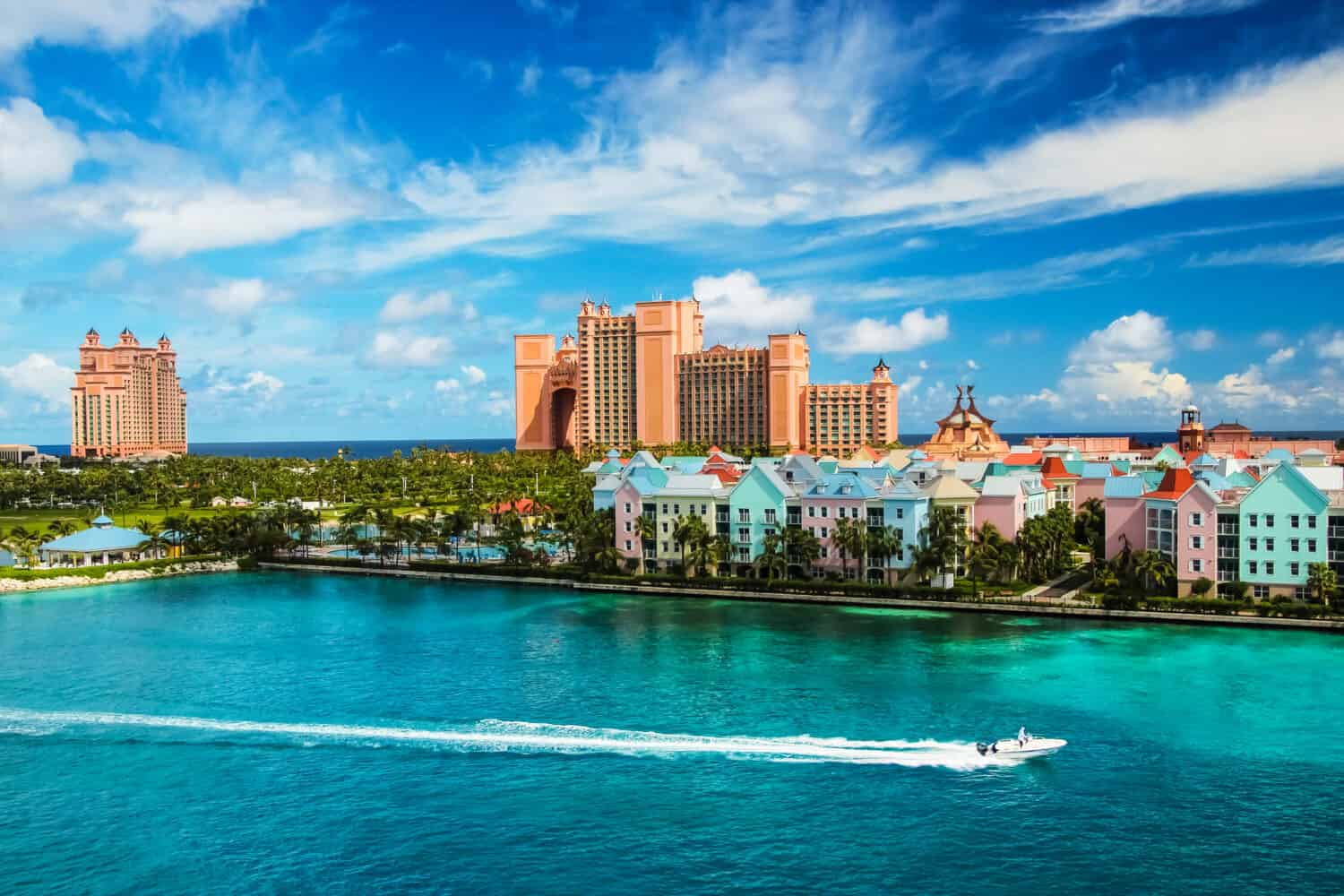
Atlantis Paradise Island in the Bahamas is a luxurious hotel where tourists get world-class service.
©Stefan Ugljevarevic/Shutterstock.com
What Was the Earliest Hurricane on Record to Hit the Bahamas?
The 1926 Nassau hurricane is the earliest hurricane in the Bahamas on record. It is known as the San Liborio hurricane or The Great Bahamas Hurricane of 1926, and it hit the Bahamas on July 22, 1926, as a Category 4 hurricane.
The hurricane was destructive to the Bahamian capital Nassau and the island of New Providence until just two years later when the 1928 Okeechobee hurricane hit land. The death toll varies from 106 to 146, and the hurricane season that year took 300 total lives.
Also, this hurricane was the strongest ever recorded in July until Hurricane Dennis in 2005. Hurricane Dennis was also a Category 4 and had top winds of 150 mph.
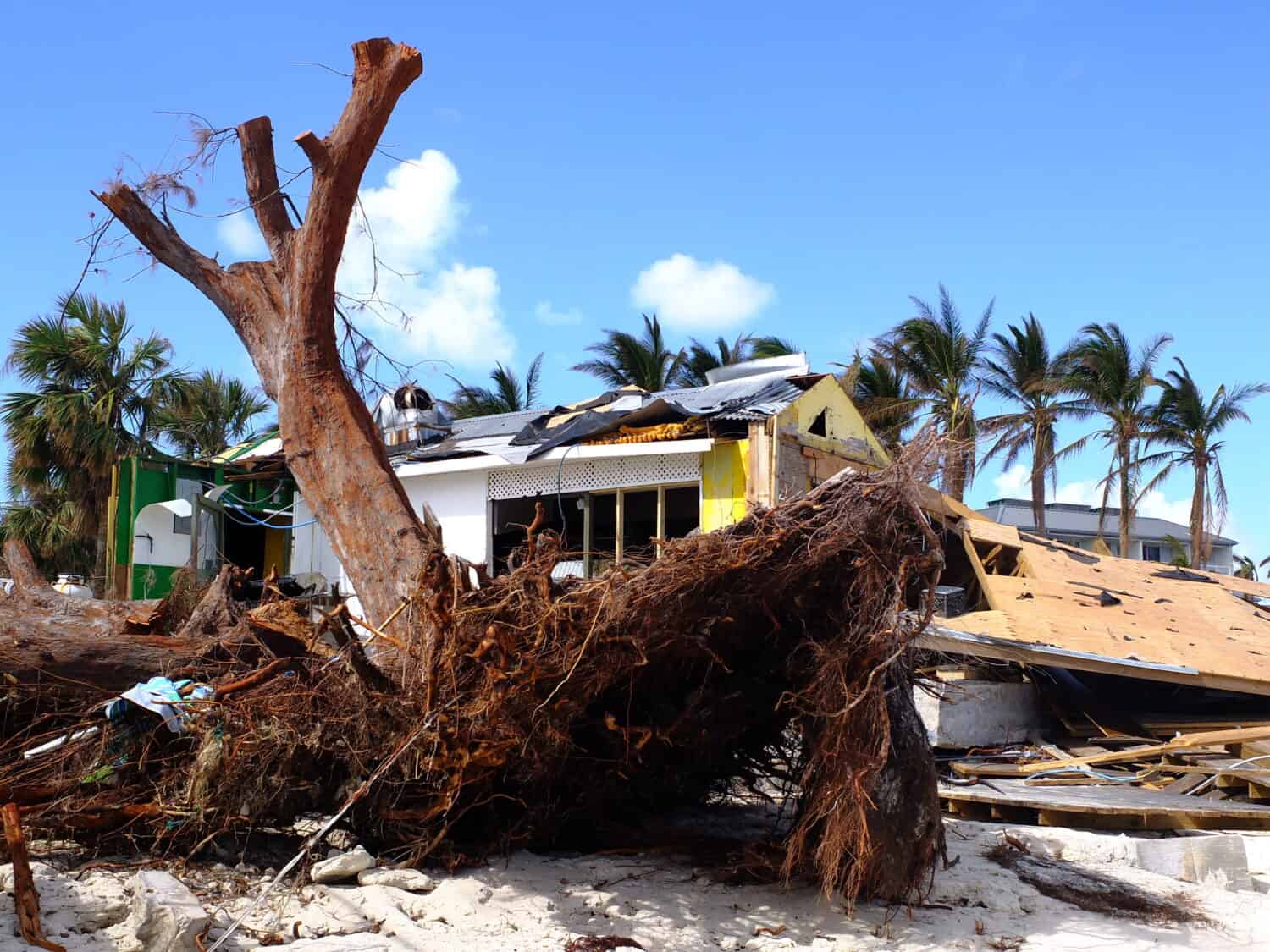
Many hurricanes that the Bahamas see don’t make landfall.
©Robert Szymanski/Shutterstock.com
Where Do Hurricanes Normally Hit in the Bahamas?
Hurricanes are no stranger to the Bahamas. In fact, hurricanes and tropical storms affect the Bahamas more than other nations in the Caribbean. However, some islands in the Bahamas get hit harder than others. These include:
- Central Abaco
- Andros
- East Grand Bahama
- West Grand Bahama
The Abaco islands in the northern area of the Bahamas are even labeled “The Hurricane Capital of the World.” Marsh Harbour in Abaco is the third largest city in the Bahamas. In 2019, Hurricane Dorian, a Category 5, hit the city. The winds roared at 185 mph. That storm tied the 1935 Labor Day hurricane for the strongest Atlantic hurricane landfall on record. The storm left the Marsh Harbour as a shell of a city, and the locals are still rebuilding today.
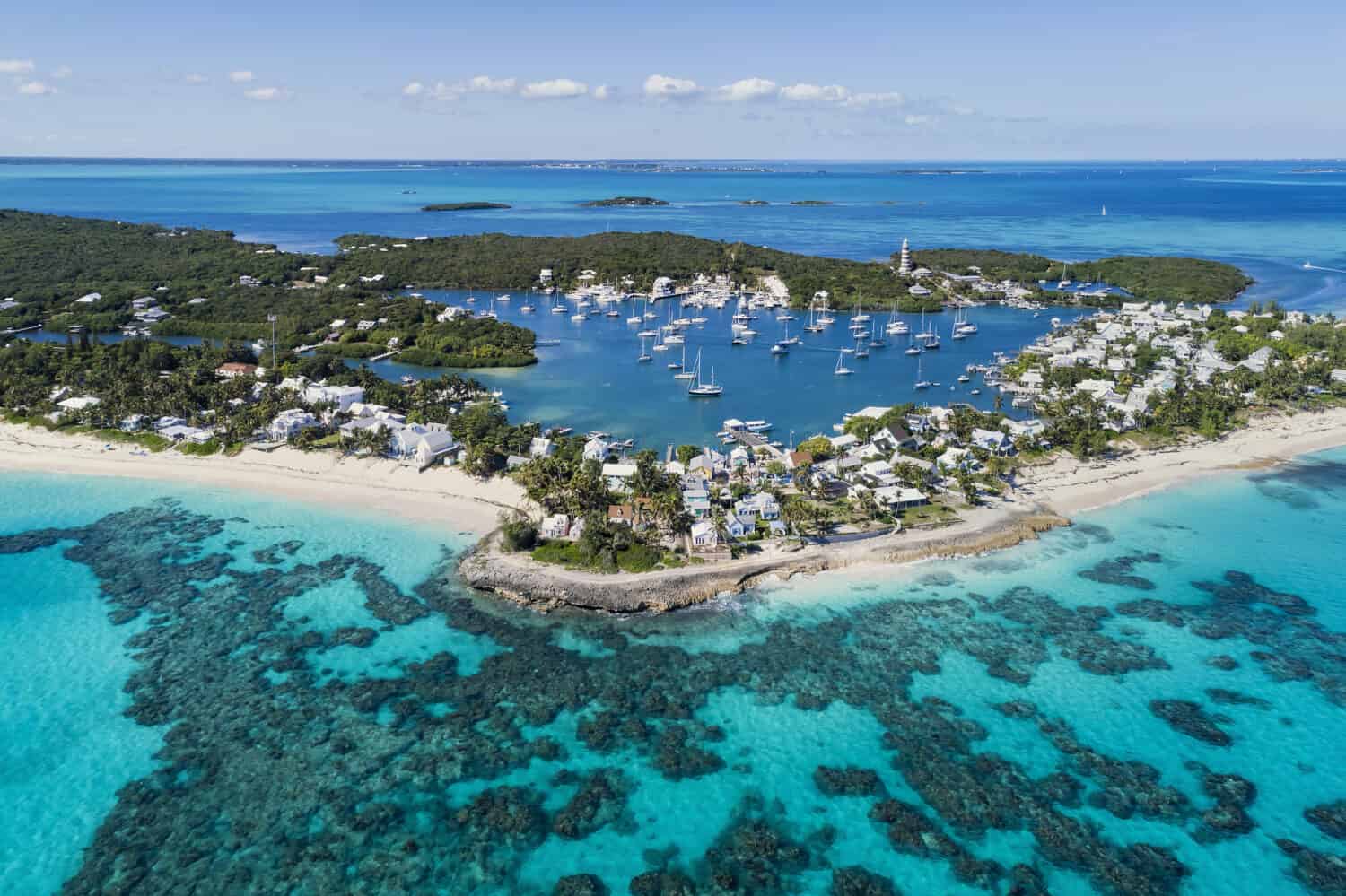
Hurricane Dorian damaged or destroyed 60% of the homes in Northern Abaco.
©pics721/Shutterstock.com
How Often Do Hurricanes Hit the Bahamas?
The islands of the Bahamas are in “the hurricane belt,” and the area has seen at least 22 Atlantic hurricanes. There are Category 4 and 5 hurricanes that caused more damage than others. Some of those include:
Hurricane Floyd in 1999
The hurricane hit the Bahamas in September 1999. It was a Category 4 with winds reaching 155 mph. The high winds and waves toppled power and communication lines. Locals were without electricity and telephone services for days. The island with the greatest damage were Abaco Islands, Cat Island, San Salvador Island, and Eleuthera Island. Despite the high winds and damage, very few deaths were reported.
Hurricane Joaquin in 2015
A Category 4 storm, Hurricane Joaquin hit the central and southeastern Bahamas at the end of September and beginning of October in 2015. It took the lives of 34 people all of whom were at sea and caused an estimated $200 million in damage. The storm is the strongest storm to hit the Bahamas in October since 1866. The storm affected around 7,000 people in the Bahamas, and the hurricane destroyed 836 homes.
Hurricane Irma in 2017
Hurricane Irma started in August and ended in September of 2017. It was a Category 5 with winds reaching 177 mph. On Sept. 8, the eye of the hurricane passed over Duncan Town on the Ragged Islands. The storm also passed directly over Inagua and South Acklins. The islands in the southeastern region of the Bahamas experienced hurricane conditions whereas the central and northwestern islands were outside of Irma’s intense winds.
Hurricane Dorian in 2019
Another storm right during hurricane season, Hurricane Dorian caused havoc at the end of August, and the beginning of September. It became the strongest hurricane to hit the northwestern Bahamas in modern records with the greatest devastation on Great Abaco which suffered 87% of the hurricane’s wrath. The catastrophic damage cost an estimated $3.4 billion with 29,500 homeless and/or jobless in Abaco. Also, the storm destroyed and/or damaged over 75% of the homes on the island. The storm also hit Grand Bahama Island for 48 hours, just hovering over the island and only moving at 1 mph all while causing flooding and wind damage as it plummeted the area.
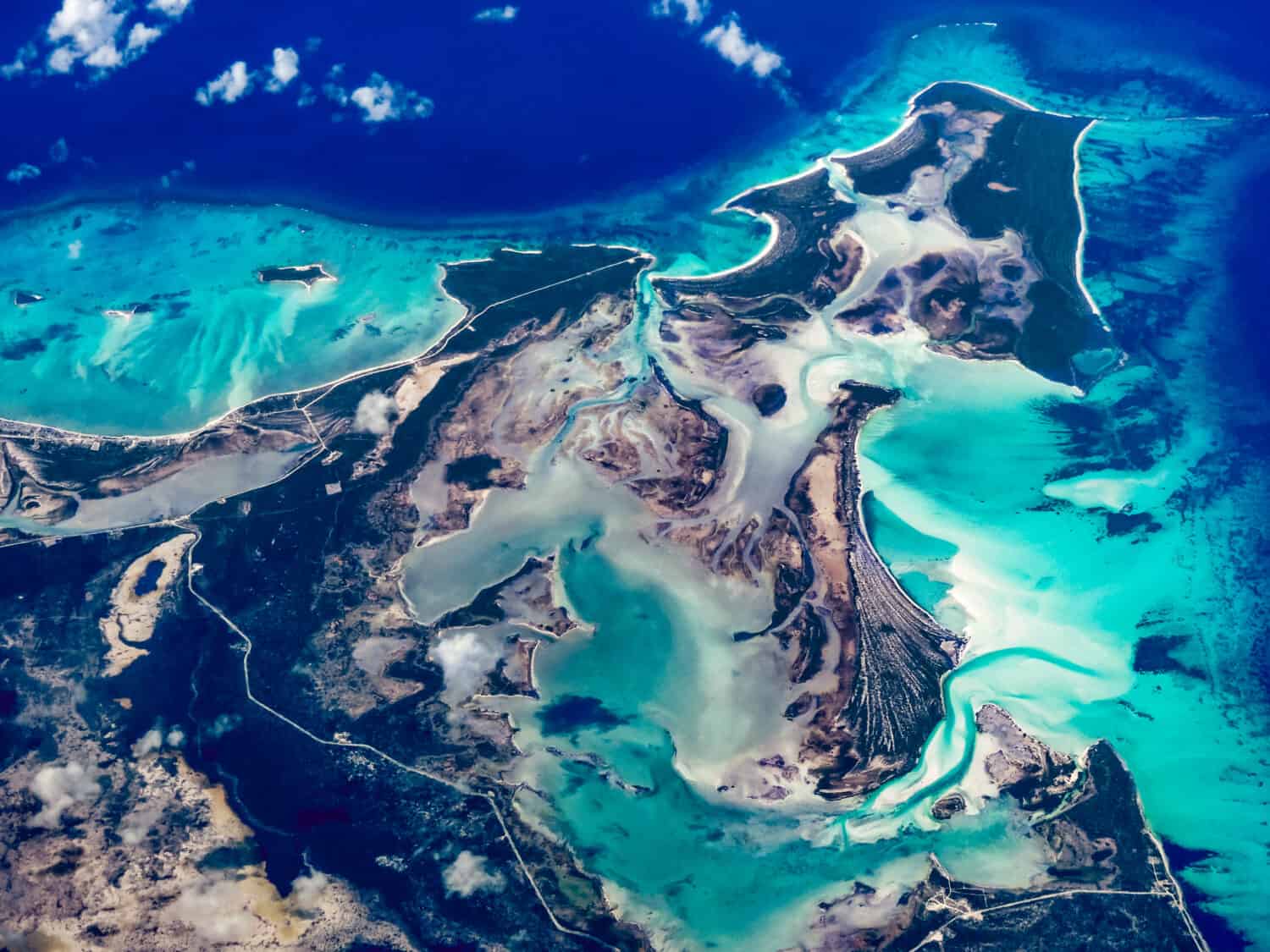
The Bahamas update the public with advisories such as Hurricane Warning and Hurricane Watch.
©Ygo Neto Batista/Shutterstock.com
What Part of the Bahamas Is the Safest From Hurricanes?
Though you should try to visit not during hurricane season if you do find yourself in the Bahamas during those months you can rest assured that the Bahamas Ministry of Tourism & Aviation (BMOTA) actively monitors any hurricane formation in the Atlantic Ocean.
Hotels in the Bahamas work with the BMOTA, and at the beginning of each hurricane season, the Bahamas Hotel Association checks all its members’ generators and their water-producing capabilities. You can do a quick internet search to see if the hotel you book is part of the association. The association checks members’ communication lines and contact information to keep everything up to date. And an inventory of members with satellite phones exists. The association tests those phones each year as well.
The Bahamas update the public with advisories such as Hurricane Warning and Hurricane Watch. The advisories describe the actions of the storm.
- Tropical Storm Alert: Storm can hit within 48 hours
- Tropical Storm Watch: 36 hours
- Tropical Storm Warning: 24 hours
- Tropical Storm All-Clear: The storm left, but proceed with caution
- Hurricane Alert: Hurrican can hit within 48 hours
- Hurricane Watch: 36 hours
- Hurricane Warning: 24 hours
- Hurricane All-Clear: The storm left, but proceed with caution

Hurricane season is the cheapest time to visit the Bahamas.
©tokar/Shutterstock.com
The Bahamas is picturesque. You can visit sandy, white beaches and dive into pristine, clear blue waters at almost every hotel. Though the islands are in the “hurricane belt,” it is not a certainty that there will be a hurricane if you travel to the Bahamas during hurricane season. Also, technology continues to improve, and meteorologists are more accurately tracking storms to give travelers and locals plenty of warning. However, always listen to directions and warnings from officials to keep safe when entering hurricane season.
Thank you for reading! Have some feedback for us? Contact the AZ Animals editorial team.







